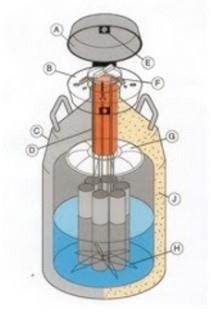By Dean Kreager
With only 10% of beef herds in the United States utilizing Artificial Insemination (A.I.), from time to time the discussion arises on whether it is worth doing on small beef farms. In some situations, this is an easy answer while in other situations it is not so clear cut. Some herds are operated with the goal of producing superior offspring. Others are trying to get income from land that is not suitable for other purposes, and they want to do it with minimal labor. Both are worthy goals but the use of A.I. only fits one of the two situations.

Why use A.I.?
There are many possible reasons, but I will just discuss three here.
The first is genetic improvement. Whether you are raising purebred cattle and tracking EPD’s or raising show cattle and looking at phenotype, A.I. opens the door to using the top genetics in the country. For $20 to $50 per straw you can purchase semen on nearly any bull. You also have the option to purchase semen from a variety of sires to improve your genetic diversity. Can you afford more than one bull in a small herd? New sires are released every year and on average each generation is better than the previous generation. How often can you afford to replace your bull with a new model? Finally, you have the option of sexed semen. Improvements continue to be made in sex sorting semen. Current results are typically within 10% of conventional semen pregnancy rates.
The second is biosecurity. A bull brought into your herd has the potential to bring along diseases that your herd may not have been exposed to in the past. A good vaccination program goes a long way in reducing these risks. There still is a concern of sexually transmitted diseases being transferred if the bull services other cattle through lease arrangements or weak fences.
The third can be a big one and that is safety. No matter how calm a bull may seem it is still a bull and should not be trusted. While beef bulls tend to be less dangerous than dairy bulls there are still many people injured or killed by bulls each year.
But First
Before implementing an A.I. breeding program it is crucial that your herd health and nutrition program are being taken care of.
If you do not have a vaccination program in place, consult with your veterinarian to develop a program that will work well for your farm. Breeding time is not the time to vaccinate. Vaccinations should be given 5-6 weeks before breeding. Vaccinating too near insemination time can result in reduced pregnancy rates.
Be sure your cows are receiving adequate nutrition. This involves testing the forage and monitoring body condition scores. Very thin cows with body condition scores of 4 or less are likely to have greatly reduced fertility. Remember that the nutrients a cow takes in first go to maintenance and second to growth. Next the nutrients are used for production which in this case is milk. Finally, anything that is left can be used for reproduction. Too often there may not be enough energy or protein left after maintenance, growth and production take their share and reproduction suffers.
Economics
When it comes down to economics there are many things to consider. If you are just looking at dollars spent, it is hard to continue to feed and care for a bull while adding the A.I. costs on top of the bull expenses. Going 100% A.I. is possible but takes dedication to details and a time commitment to heat detection and pregnancy checking. It is challenging to maintain a narrow calving window when a clean-up bull is not used, but it is possible.
A study reported by Les Anderson at the University of Kentucky looked at the dollar cost per pregnancy when using bulls purchased at various prices. A $3000 bull used for 15 cows resulted in a cost of approximately $100 per calf, depending on many factors such as pregnancy rate. While this may not be exact today it can provide a ballpark idea.
When it comes to costs for A.I., many beef cattle are bred using an estrus synchronization program. I am including those cost for this discussion. With a cost of about $20 for synchronization, $20 -$40 for semen and around $20 if you need to hire a technician you are at around $60-$80 without adding in labor. With a 60% pregnancy rate you are at around $115 per pregnancy. There are also other costs to consider such as owning a nitrogen tank and paying to have it filled about every 8 weeks which could amount to $300-$500 per year.
There is not one way to raise cattle that is right for all situations. If your goal is to maximize genetic improvement in your cattle and you are willing to spend some time and invest in facilities, A.I. is a great place to start. If you do decide to try A.I., remember that impacts may take years to be observed. The generation interval on cattle is long so you won’t see results immediately.
Source : osu.edu